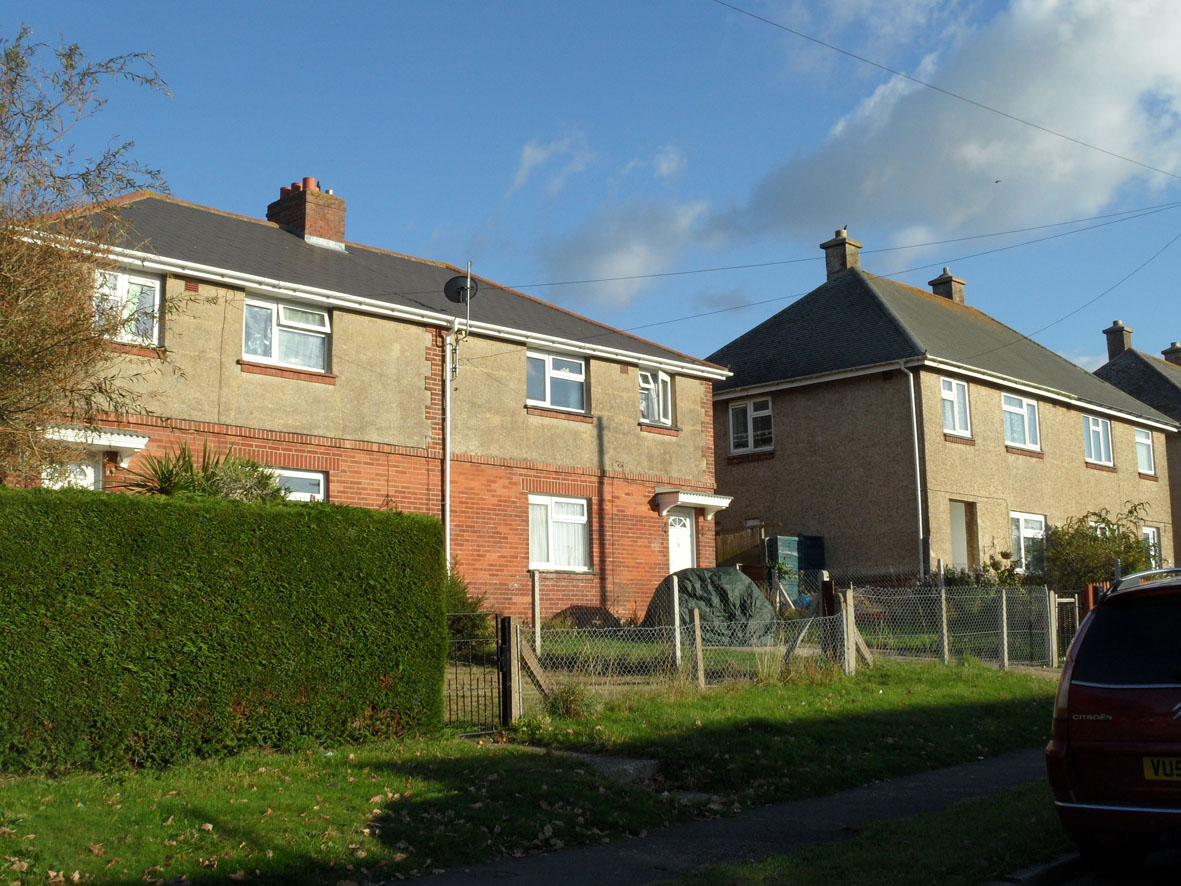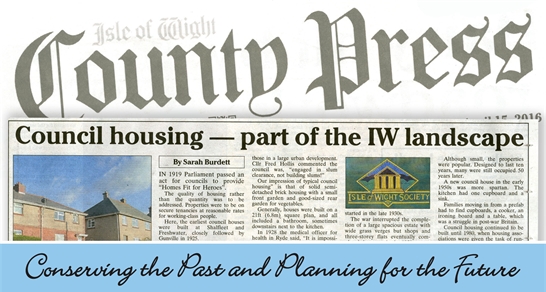Council Housing
Council Housing – Part of the Housing Landscape of the Island
1919 parliament passed an Act of Parliament for Councils to provide “Homes Fit for Heroes.” The quality of housing rather than the quantity was to be addressed. Properties were to be on secure tenancies at reasonable rates for working class people.
Here the earliest Council Houses were built at Shalfleet and Freshwater, closely followed by Gunville in 1925. The County Council received government subsidies of £12.50 for each house built. The houses built at Bembridge cost £450 each.
By the 1930s, building costs had reduced to £250 for a two, or £300 for a three bedroomed house. The Ministry of Health felt that the cost of houses at Chale, £340, was too high. The County Council replied that small rural projects cost more than those in a large urban development. Councillor Fred Hollis commented that the Council was, “engaged in slum clearance, not building slums!”
Our impression of typical “Council Housing” is that of solid semidetached brick housing with a small front garden and good sized rear garden for vegetables. Generally houses were built on a 21 feet (6.8m) square plan, and all included a bathroom, sometimes downstairs next to the kitchen.
In 1928 the Medical Officer for Health in Ryde said, “It is impossible to evict people from a 5shilling a week slum and offer them a home at 15s a week.” Soon new council houses were constructed in the Swanmore area, and although the construction costs had risen to £800 a pair, the rents were kept deliberately low. This development was described as “the Garden City of Ryde” and sixty families were rehoused there.

In East Cowes, Council housing started in the late 1930s. The War interrupted the completion of a large spacious estate with wide grass verges. Shops and three storey flats eventually completed the estate in the 1950s. Some of the concrete roads and Arcon prefab bases were constructed by the German Prisoners of War housed in a camp on part of the estate.
The Council’s Arcon prefabricated houses came with fitted kitchens and bathrooms, appreciated by those who had been bombed out of their homes and had lost everything. Although small, the properties were popular. Designed to last ten years, many were still occupied fifty years later.
A new Council House in the early 1950s was more Spartan. The kitchen had one cupboard and a sink. Families moving in from a prefab had to find cupboards, a cooker, an ironing board, and a table, which was a struggle in post war Britain.
Council Housing continued to be built until 1980, when Housing Associations were given the task of running Social Housing. The Act that year gave Council House tenants the right to buy their homes at a reduction of up to 50% of the market value, depending on their length of tenure. This resulted in a shortage of rented accommodation, still felt today, despite new building. In 2016 on the Island Social Rented Housing Stock stands at 5,283 properties.
[Go Back]

